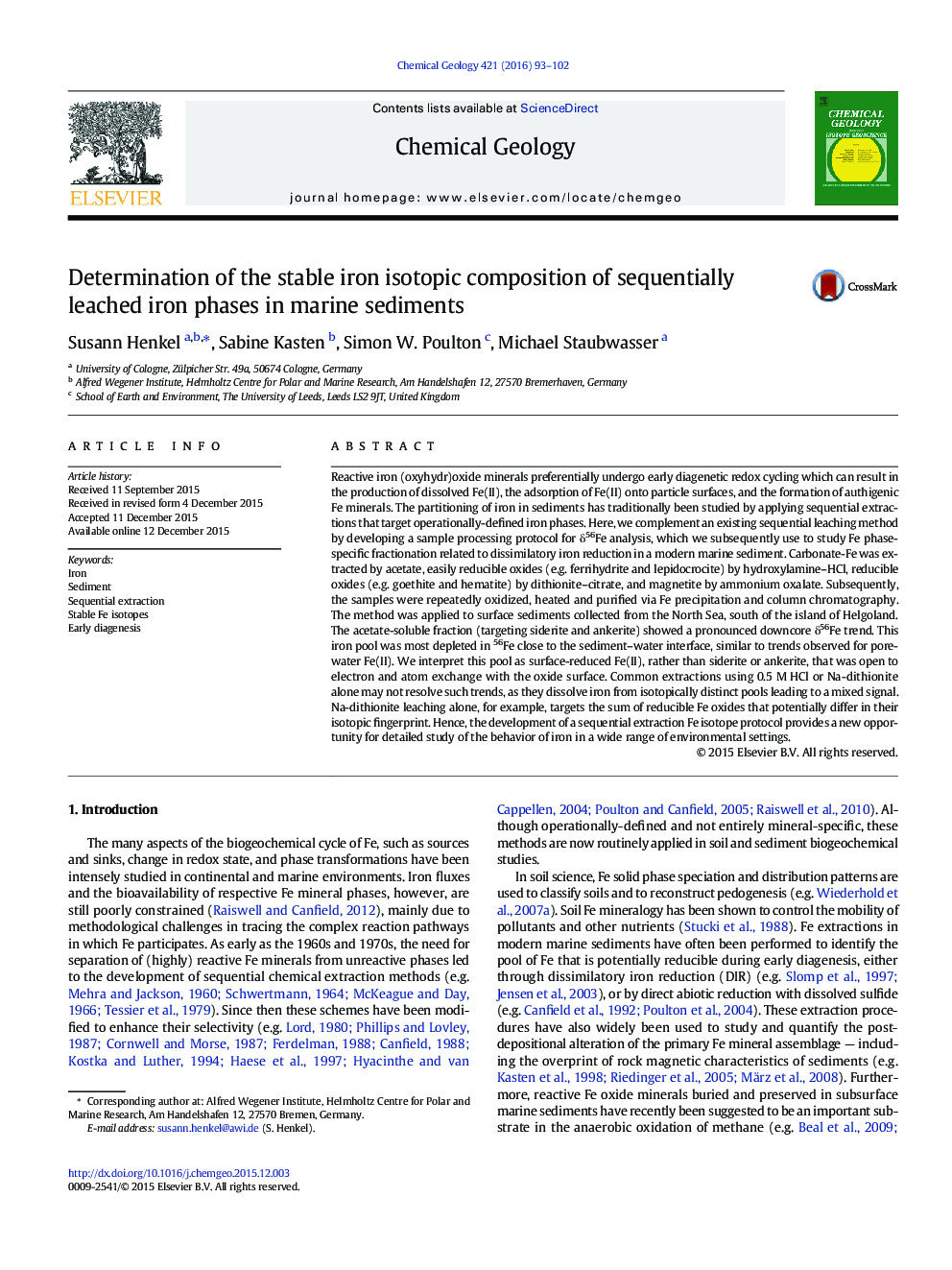| کد مقاله | کد نشریه | سال انتشار | مقاله انگلیسی | نسخه تمام متن |
|---|---|---|---|---|
| 6436177 | 1637553 | 2016 | 10 صفحه PDF | دانلود رایگان |
• The full extent of Fe isotope fractionation in sediments may be determined by selective analysis of reactive components.
• We expanded an existing sequential extraction method targeting reactive Fe minerals for stable Fe isotope analysis.
• Matrix removal by repetitive oxidation, Fe precipitation and column chromatography did not induce Fe isotope fractionation.
• The new method was applied to shallow North Sea sediments characterized by intense dissimilatory Fe reduction.
• A downcore Fe isotopic trend was observed only for the acetate-leached fraction likely comprising surface-reduced Fe(II).
Reactive iron (oxyhydr)oxide minerals preferentially undergo early diagenetic redox cycling which can result in the production of dissolved Fe(II), the adsorption of Fe(II) onto particle surfaces, and the formation of authigenic Fe minerals. The partitioning of iron in sediments has traditionally been studied by applying sequential extractions that target operationally-defined iron phases. Here, we complement an existing sequential leaching method by developing a sample processing protocol for δ56Fe analysis, which we subsequently use to study Fe phase-specific fractionation related to dissimilatory iron reduction in a modern marine sediment. Carbonate-Fe was extracted by acetate, easily reducible oxides (e.g. ferrihydrite and lepidocrocite) by hydroxylamine–HCl, reducible oxides (e.g. goethite and hematite) by dithionite–citrate, and magnetite by ammonium oxalate. Subsequently, the samples were repeatedly oxidized, heated and purified via Fe precipitation and column chromatography. The method was applied to surface sediments collected from the North Sea, south of the island of Helgoland. The acetate-soluble fraction (targeting siderite and ankerite) showed a pronounced downcore δ56Fe trend. This iron pool was most depleted in 56Fe close to the sediment–water interface, similar to trends observed for pore-water Fe(II). We interpret this pool as surface-reduced Fe(II), rather than siderite or ankerite, that was open to electron and atom exchange with the oxide surface. Common extractions using 0.5 M HCl or Na-dithionite alone may not resolve such trends, as they dissolve iron from isotopically distinct pools leading to a mixed signal. Na-dithionite leaching alone, for example, targets the sum of reducible Fe oxides that potentially differ in their isotopic fingerprint. Hence, the development of a sequential extraction Fe isotope protocol provides a new opportunity for detailed study of the behavior of iron in a wide range of environmental settings.
Journal: Chemical Geology - Volume 421, 10 February 2016, Pages 93–102
